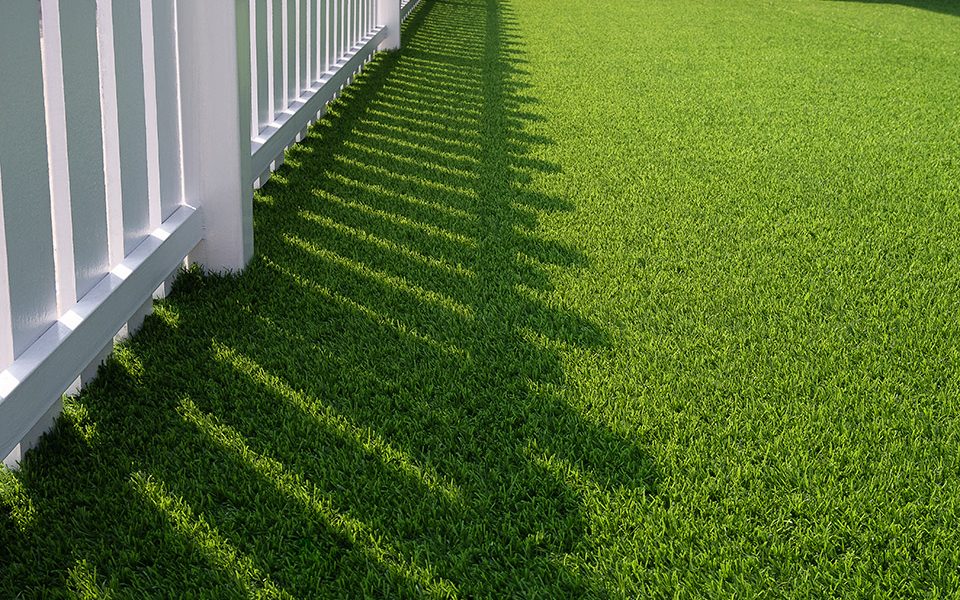How to Care for New Turf?
If you recently got new turf, congratulations! You join an elite league of people who care about the overall look of their property. Turf grass is beautiful and functional. It adds an air of sophistication to any compound. This lawn is highly favored for residential and commercial properties alike because it is specifically made to withstand foot traffic while maintaining its luster.
Additionally, it does not need a lot of watering, only proper maintenance to thrive. If you are still new to the turf world, you might be worried about its growth and maintenance.
However, you can rest easy because care comes easy once you learn all the basics.
Basic Maintenance Tips
• Limit traffic
However beautiful that new lawn looks, you should actively avoid walking on it for a while. The journey to growing into the beautiful lawn it is right now had been difficult. The last thing the turf needs is pressure from feet and other devices hindering soil bedding and growth.
All your lawn needs right now is a little time to get used to the environment. It is best to avoid your new lawn for several weeks. This will give the roots enough time to bed into the soil. You will know that the roots have bedded well when you will not be able to lift a corner easily.
Some turfs take longer to root, especially if planted on a slope. Therefore, be sure to give it enough time by minimizing foot traffic. Experts recommend 5 to 6 weeks just to be safe.
• Mow when the time is right
The excitement to mow your new lawn is excellent. However, that should not push you into mowing before it is time. Turf lawns will need mowing, but not before the roots have bedded. After you’ve given the lawn enough time, you can get your mower and start cutting the grass.
Before you mow, ensure that the lawn is relatively dry. This will prevent you from pulling out any parts of the lawn. Also, it would be best if you found out your turf species before mowing to set the correct cutting height. This ensures that you do not cut it too short, thus preventing stunted growth in the long run.
Additionally, let the lawn grow to at least one and a half times the recommended height for its species before cutting. This ensures that the lawn is a little established, preventing damage to the roots. Furthermore, when mowing, be sure to put the grass box on to collect the clippings. Finally, constantly water after cutting to replenish any lost moisture.
• Water the lawn
When it comes to hydrating the lawn, the goal is to keep it moist and prevent it from drying off. The area directly under the lawn should remain moist to encourage root bedding and general growth. Watering a new lawn calls for precision and observation.
The general rule dictates two light applications every day, followed by heavy watering every other day. However, this is subject to change with differences in weather. For starters, if it is extra windy, water the lawn a little more to replenish blown-away moisture. The same goes for hotter days; some may need watering up to four times a day.
Additionally, new lawns in the summer thrive best when you water in the early morning and late in the day, before the sun appears and after it has set. It ensures that the lawn does not lose moisture quickly, keeping it well-hydrated until its next watering.
The footprint test should also let you know if your lawn needs water if you are not sure. If your footprint stays put, then your lawn could benefit from a little more watering. Lastly, your turf species could also help you determine how much watering is enough.
What Else Can I Do?
• Supply enough sunlight
If you have trees and shrubs casting a shadow on your lawn, you may have to trim them to allow more sunlight to pass through. Insufficient sunlight on a new lawn will hinder the proper growth of the turf.
For optimum health, a new lawn will need approximately 6 hours of sunlight exposure. If the shade is too much, it will not thrive as it should. Consider pruning, thinning, and lowering the branches of surrounding trees and bushes. It will give your lawn a lot more sunlight.
• Avoid overwatering
In the rainy seasons, you need to ensure that you do not overwater your lawn. The amount of water that a new lawn needs depends on the species of turf you have. However, the general rule is to maintain a wet or moist lawn.
If you overwater your lawn, it will suffocate the lawn as well as stunt root growth. This means that the lawn will not grow and may even die if you continue to flood it. Every time you water your lawn, ensure that puddles form on the surface just a little, then stop. This will supply the lawn with sufficient moisture without flooding it. As time goes, you will realize that your lawn will need less and less water.
• Fertilize the lawn
It is always good to fertilize your lawn at least twice a year to help it grow. Preferably, you should fertilize in spring and autumn. When buying fertilizer, be sure to consult an expert on the brand and type best for your lawn. Be sure to learn about the turf species you have before buying fertilizer because different species will benefit from different ingredients. Also, do not go too heavy on the growth juice because it could have the opposite effect. Again, seek the help of an expert to help you with this.
In conclusion, lawn care calls for dedication and alertness. The first few weeks of caring for your lawn could be challenging, but it is all worth it once it settles in, and you can use it for barbecues, events, and more.As an option, you could always hire an expert to help you care for your new lawn correctly. Just contact us, and we will get you on your way.


